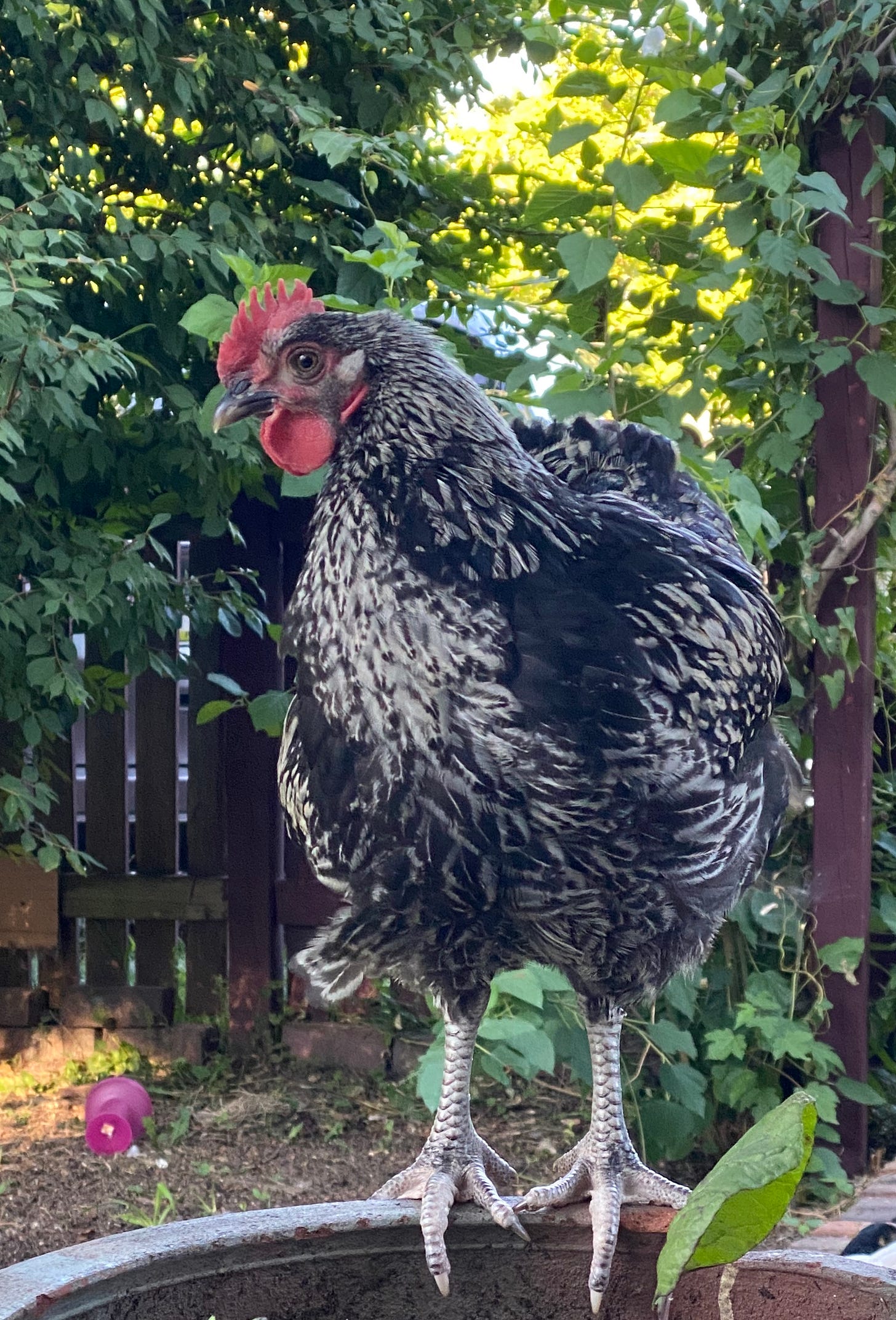My inbox, like yours, is blighted by clickbait promising the one secret to change your [area of concern] with this one [product, ingredient, hack] and discover the surprising new trend that’s obsessing [subgroup] and angering [other subgroup], and while I get how these things are supposed to be done, I just would prefer not to.
“Bartleby, the Scivener” is a good metaphor, come to think of it. A human finds himself in a dehumanizing situation and resists with simple honesty. And it kind of comes off as stupid and weird. Fits me to a T.
Being human in the post human world isn’t a curse or a failing or a #lifestyle — it’s just honesty. We are flesh and frailty. The machines and the marketing and the machinations are all moving at the speed of automated wall street transactions, and the fact is, I want to raise chickens.
I read that small farmers can’t make a living from selling their eggs, milk, meat, and produce, but they can make a living selling the “homesteading lifestyle” online.
Being human in the post human world is as much about what you refuse to do as what you choose to do. You can choose to be human, but still stumble into selling yourself off like a box of tampons — oops, you forgot to refuse to be dehumanized. Technology has something to do with it, but not everything: I think you can choose to basically be a cyborg, and still preserve your humanity, too.
Whether we choose to raise chickens and/or augment our bodies with technology, we should resist the forces of dehumanization that grind us into data or skin us and sew our surfaces into an agenda of what philosopher Agnes Callard calls “messaging”:
There is a kind of speech that it would be a mistake to take literally, because its function is some kind of messaging. Advertising and political oratory are examples of messaging, as is much that falls under the rubric of “making a statement,” like boycotting, protesting or publicly apologizing.
Such words exist to perform some extra-communicative task; in messaging speech, some aim other than truth-seeking is always at play. One way to turn literal speech into messaging is to attach a list of names: a petition is an example of nonliteral speech, because more people believing something does not make it more true.
Whereas literal speech employs systematically truth-directed methods of persuasion — argument and evidence — messaging exerts some kind of nonrational pressure on its recipient. For example, a public apology can often exert social pressure on the injured party to forgive, or at any rate to perform a show of forgiveness. Messaging is often situated within some kind of power struggle. In a highly charged political climate, more and more speech becomes magnetically attracted into messaging; one can hardly say anything without arousing suspicion that one is making a move in the game, one that might call for a countermove.
It’s especially difficult in this climate when you’ve already dedicated yourself to “saying things,” by which I mean, vocationally. I’ve always known I am an artist, and long ago I decided to pursue the art of writing, which called to me as the form that allowed me to seek out truth and find beauty in the complexities of human experience.
Every artform has its gray areas and overlaps, but as a medium, words are especially tricky — they are used for so much else, including the “kinds of speech” that Callard describes above. Today, every public utterance is interpreted in the context of a “power struggle” and our literal, truth-seeking words are (as she puts it) “magnetically attracted into messaging.” (I <3 metaphors, but magnets have nothing to do with it; online, it is algorithms that sort us into profit streams.)
Since “one can hardly say anything without arousing suspicion” — being treated as a propagandist rather than a unique and complex human experiencing the world — one often prefers to say nothing at all. Silence is a form of resistance, but silence doesn’t upend Silicon Valley any more than Bartleby upended Wall Street. And for me, it raises questions about whether a version of humanity that is persistent but defensive, silent, isolated, and without effect is the form of humanity we hope to aspire to in the post human age.
How do I resolve my desire to create art in this medium with my desire to resist getting ground up or sewn in?
That is the question I’m grappling with right now.
This feathered fellow’s name is Mookie.



